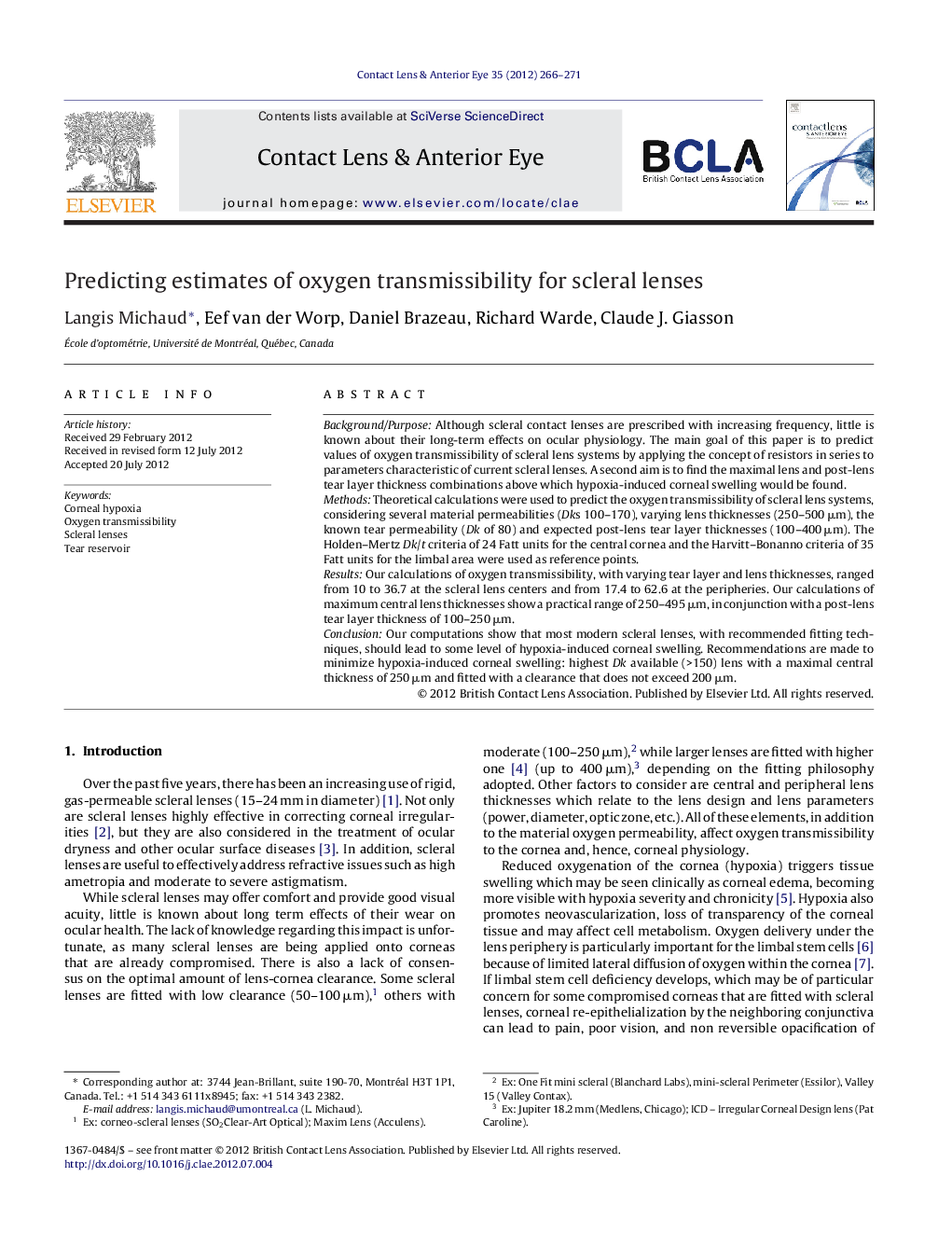| Article ID | Journal | Published Year | Pages | File Type |
|---|---|---|---|---|
| 2699267 | Contact Lens and Anterior Eye | 2012 | 6 Pages |
Background/PurposeAlthough scleral contact lenses are prescribed with increasing frequency, little is known about their long-term effects on ocular physiology. The main goal of this paper is to predict values of oxygen transmissibility of scleral lens systems by applying the concept of resistors in series to parameters characteristic of current scleral lenses. A second aim is to find the maximal lens and post-lens tear layer thickness combinations above which hypoxia-induced corneal swelling would be found.MethodsTheoretical calculations were used to predict the oxygen transmissibility of scleral lens systems, considering several material permeabilities (Dks 100–170), varying lens thicknesses (250–500 μm), the known tear permeability (Dk of 80) and expected post-lens tear layer thicknesses (100–400 μm). The Holden–Mertz Dk/t criteria of 24 Fatt units for the central cornea and the Harvitt–Bonanno criteria of 35 Fatt units for the limbal area were used as reference points.ResultsOur calculations of oxygen transmissibility, with varying tear layer and lens thicknesses, ranged from 10 to 36.7 at the scleral lens centers and from 17.4 to 62.6 at the peripheries. Our calculations of maximum central lens thicknesses show a practical range of 250–495 μm, in conjunction with a post-lens tear layer thickness of 100–250 μm.ConclusionOur computations show that most modern scleral lenses, with recommended fitting techniques, should lead to some level of hypoxia-induced corneal swelling. Recommendations are made to minimize hypoxia-induced corneal swelling: highest Dk available (>150) lens with a maximal central thickness of 250 μm and fitted with a clearance that does not exceed 200 μm.
